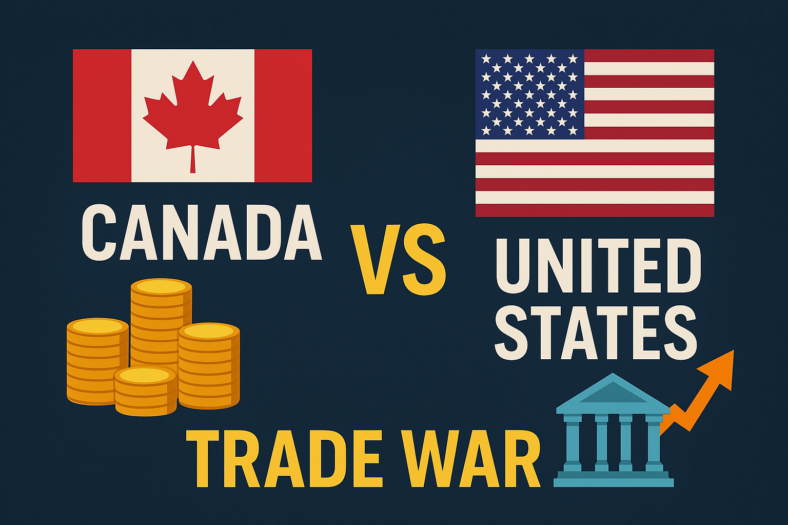From exploring the various financing avenues available to deciphering the key factors that influence interest rates and loan terms, this guide aims to empower you with knowledge. Whether you’re a first-time car buyer or a seasoned veteran in the world of auto finance, our detailed insights and practical tips will equip you to navigate the process with confidence.
Join us as we unravel the complexities of used car financing in Canada, demystifying terms, debunking myths, and offering actionable advice to help you secure the best financing deal for your next vehicle purchase. Let’s embark on this journey together, ensuring that you drive away not only with a reliable pre-owned car but also with financial peace of mind.
Best Used Car Loans in Canada – Our Top Picks
What is used car financing how does it work?
Used car financing refers to the process of obtaining a loan to purchase a pre-owned vehicle. It works similarly to financing a new car but with some distinct differences. Here’s how it generally works:
Application: The process typically begins with the buyer filling out a loan application, either online, at a dealership, or through a bank or credit union. The application will require personal and financial information, including income, employment history, credit score, and the details of the vehicle you intend to purchase.
Credit Check: Lenders will assess your creditworthiness by conducting a credit check. Your credit score plays a significant role in determining the interest rate and loan terms you qualify for. A higher credit score generally translates to lower interest rates and more favorable loan terms, while a lower score may result in higher rates or stricter terms.
Loan Approval: Once your application is submitted, the lender will review your financial information and make a decision on whether to approve your loan. Approval is contingent upon factors such as credit score, income, debt-to-income ratio, and the value of the vehicle.
Loan Terms: If approved, the lender will offer you loan terms, including the loan amount, interest rate, repayment period (usually in months), and any additional fees or charges. It’s crucial to review and understand these terms before accepting the loan offer.
Down Payment: Depending on the lender and your creditworthiness, you may be required to make a down payment towards the purchase of the vehicle. The down payment reduces the loan amount and demonstrates your commitment to the purchase.
Vehicle Inspection and Title Transfer: Before finalizing the loan, the lender may require a vehicle inspection to assess its condition and value. Once the inspection is completed, and the loan terms are agreed upon, the lender will transfer the funds to the seller or dealership, and you’ll take ownership of the vehicle.
Repayment: After purchasing the vehicle, you’ll be responsible for repaying the loan according to the agreed-upon terms. This typically involves making monthly payments that include both principal and interest until the loan is paid off.
Vehicle Ownership: While you’re making payments on the loan, the lender will hold the title to the vehicle as collateral. Once the loan is fully repaid, the lender will release the title, and you’ll become the sole owner of the vehicle.
Overall, used car financing provides an accessible way for individuals to purchase a pre-owned vehicle by spreading the cost over time. It’s essential to shop around for the best loan terms, understand the total cost of financing, and ensure that the monthly payments fit within your budget.
Pros and cons of used car financing
Used car financing offers several advantages and disadvantages that individuals should consider before deciding to finance a pre-owned vehicle. Here’s a detailed breakdown of the pros and cons:
Pros:
Lower Depreciation: Used cars typically depreciate at a slower rate than new cars. Financing a used vehicle allows you to avoid the steep initial depreciation that occurs in the first few years of ownership, potentially saving you money in the long run.
Lower Purchase Price: Pre-owned vehicles generally come with a lower purchase price compared to new cars of the same make and model. Financing a used car may result in lower monthly payments and a more affordable overall cost, making it easier to fit within your budget.
Variety of Options: The used car market offers a wide range of vehicles in various makes, models, and price ranges. Financing a used car gives you the flexibility to choose from a broader selection of vehicles, including older models and luxury cars that may be out of reach if purchasing brand new.
Lower Insurance Costs: Insurance premiums for used cars are typically lower than those for new cars since the replacement value of a used vehicle is lower. Financing a used car can help you save money on insurance premiums over time.
Easier Loan Approval: Lenders may be more lenient when approving loans for used cars, especially for individuals with less-than-perfect credit. If you have a limited credit history or a lower credit score, financing a used car may be more accessible than financing a new one.
Cons:
Higher Interest Rates: Interest rates for used car loans are often higher than those for new car loans. Since lenders perceive used cars as higher risk due to potential issues with age and condition, they may charge higher interest rates to mitigate their risk.
Limited Warranty Coverage: Most used cars are sold “as is,” meaning they come with limited or no warranty coverage from the manufacturer. If you encounter mechanical issues or repairs shortly after purchasing a used car, you may be responsible for covering the costs out of pocket.
Potential for Higher Maintenance Costs: Older vehicles may require more frequent maintenance and repairs compared to new cars. Financing a used car means you’ll be responsible for any maintenance and repair costs that arise, which can add up over time.
Limited Availability of Features: Older used cars may lack the latest technology, safety features, and amenities found in newer models. If having the latest features is important to you, financing a used car may not provide the same level of satisfaction as purchasing a new one.
Shorter Loan Terms: Lenders may offer shorter loan terms for used car financing compared to new car financing. While this can help you pay off the loan faster, it may result in higher monthly payments, potentially stretching your budget.
In summary, while used car financing offers several benefits such as lower purchase prices and lower depreciation, it also comes with drawbacks such as higher interest rates and potential maintenance costs. It’s essential to weigh the pros and cons carefully and consider your budget, needs, and preferences before deciding whether to finance a used vehicle.
What types of used car financing options are available in Canada
In Canada, several financing options are available for individuals looking to purchase a used car. These options cater to different financial situations and preferences, offering flexibility in terms of repayment, interest rates, and loan terms. Here are the primary types of used car financing options available:
Bank Financing: Banks and financial institutions offer used car loans with fixed or variable interest rates. Borrowers can apply for financing directly with their bank or credit union, often receiving competitive rates based on their creditworthiness. Bank financing typically requires a down payment and offers flexibility in terms of loan amounts and repayment terms.
Dealership Financing: Many car dealerships in Canada provide financing options for both new and used vehicles. Dealership financing allows buyers to finance their purchase directly through the dealership, often with the convenience of applying for financing and selecting a vehicle in one location. While dealership financing may offer competitive rates, it’s essential to compare offers with other lenders to ensure you’re getting the best deal.
Online Lenders: Online lenders and financial technology (fintech) companies offer digital platforms for obtaining used car loans. These lenders often streamline the application process, allowing borrowers to apply for financing online and receive loan offers quickly. Online lenders may cater to individuals with various credit profiles, offering options for borrowers with excellent credit to those with less-than-perfect credit histories.
Peer-to-Peer (P2P) Lending: P2P lending platforms connect borrowers directly with individual investors willing to fund their loans. Borrowers can apply for used car financing through P2P lending platforms, and investors decide whether to fund their loan requests based on factors such as creditworthiness and loan terms. P2P lending may offer competitive rates and flexible terms, but borrowers should carefully review the terms and conditions before accepting a loan offer.
Manufacturer Financing: Some automakers and their affiliated finance companies offer financing options for both new and used vehicles. Manufacturer financing may come with special incentives, such as promotional interest rates or cashback offers, to encourage vehicle purchases. Buyers can often apply for manufacturer financing at the dealership when purchasing a used car from that brand.
Home Equity Loans or Lines of Credit: Homeowners may consider using a home equity loan or line of credit to finance a used car purchase. These loans leverage the equity in the borrower’s home as collateral, potentially offering lower interest rates compared to traditional auto loans. However, using home equity for a vehicle purchase carries the risk of putting your home at stake if you’re unable to repay the loan.
Each of these used car financing options has its advantages and considerations, depending on factors such as creditworthiness, loan terms, and personal preferences. Before selecting a financing option, it’s essential to compare offers from multiple lenders, review the terms and conditions carefully, and ensure that the loan aligns with your budget and financial goals.
What loan terms are people choosing for their used car loan?
In Canada, the loan terms chosen by individuals for used car financing can vary depending on factors such as personal preferences, financial circumstances, and the lender’s offerings. However, several common loan terms are popular among borrowers seeking to finance a pre-owned vehicle. These loan terms typically range from short-term to long-term options and include:
Short-Term Loans: Short-term used car loans typically have repayment periods ranging from 12 to 36 months (1 to 3 years). Shorter loan terms often result in higher monthly payments but allow borrowers to pay off the loan faster and potentially save on interest costs over time. Short-term loans are suitable for individuals who prefer to minimize the duration of their debt and own their vehicle outright sooner.
Medium-Term Loans: Medium-term used car loans typically have repayment periods ranging from 37 to 60 months (3 to 5 years). These loan terms offer a balance between manageable monthly payments and a reasonable repayment period. Medium-term loans are popular among borrowers looking for a balance between affordability and the desire to pay off their loan within a reasonable timeframe.
Long-Term Loans: Long-term used car loans typically have repayment periods ranging from 61 to 84 months (5 to 7 years) or even longer in some cases. Long-term loans result in lower monthly payments but extend the duration of the loan, resulting in higher overall interest costs. Long-term loans are suitable for individuals seeking to reduce their monthly financial burden, although they may end up paying more in interest over the life of the loan.
Flexible Terms: Some lenders offer flexible loan terms that allow borrowers to choose custom repayment periods based on their preferences and financial situation. Flexible terms may include options such as bi-weekly or accelerated payment schedules, allowing borrowers to align their loan payments with their income schedule and budgetary constraints.
The choice of loan term ultimately depends on factors such as the borrower’s budget, financial goals, and the total cost of financing. Borrowers should carefully consider the implications of each loan term, including the impact on monthly payments, total interest costs, and the length of time it takes to pay off the loan. Additionally, borrowers should strive to select a loan term that aligns with their financial priorities and allows them to comfortably afford their vehicle while meeting other financial obligations.
Should I finance or lease a used car?
Deciding whether to finance or lease a used car depends on your individual preferences, financial situation, and specific needs. Both options have their advantages and considerations, so it’s essential to weigh the pros and cons carefully before making a decision. Here’s a detailed comparison to help you determine whether financing or leasing a used car is the right choice for you:
Financing a Used Car:
Pros:
Ownership: Financing allows you to own the vehicle outright once you’ve paid off the loan. You can customize the car, drive it as much as you want, and sell it whenever you choose.
Equity Buildup: As you make payments on the loan, you build equity in the vehicle, which can be beneficial if you plan to trade in the car or sell it in the future.
Flexibility: Financing offers flexibility in terms of mileage limits, customization options, and the ability to modify or sell the vehicle without restrictions.
Cons:
Higher Monthly Payments: Financing typically results in higher monthly payments compared to leasing, as you’re paying for the full purchase price of the vehicle.
Depreciation: While you own the vehicle, you’re also responsible for its depreciation, which can impact its resale value over time.
Maintenance Costs: As the vehicle ages, you may incur higher maintenance and repair costs, especially once the warranty expires.
Leasing a Used Car:
Pros:
Lower Monthly Payments: Leasing often results in lower monthly payments compared to financing, as you’re only paying for the depreciation of the vehicle during the lease term.
Lower Repair Costs: Leased vehicles are typically covered by a manufacturer’s warranty, reducing the out-of-pocket expenses for maintenance and repairs.
Access to Newer Models: Leasing allows you to drive a newer model vehicle with the latest features and technology, providing a higher level of comfort and convenience.
Cons:
No Ownership: With leasing, you don’t own the vehicle at the end of the lease term and must return it to the leasing company. This means you have no equity in the vehicle and don’t benefit from its potential resale value.
Mileage Restrictions: Leases often come with mileage restrictions, and exceeding the mileage limit can result in additional fees at the end of the lease term.
Potential Penalties: Leases may have strict guidelines regarding wear and tear on the vehicle, and you may be responsible for paying penalties for excessive wear or damage.
Ultimately, the decision between financing and leasing a used car depends on your priorities, lifestyle, and financial goals. If you value ownership, flexibility, and long-term equity buildup, financing may be the right choice for you. On the other hand, if you prefer lower monthly payments, access to newer models, and minimal maintenance costs, leasing could be a suitable option. Be sure to evaluate your needs and consider the pros and cons of each option before making a decision. Additionally, it’s advisable to consult with a financial advisor or automotive expert to explore the best option for your individual circumstances.
How to find the best used car financing in Canada
Finding the best used car financing in Canada involves thorough research, comparison shopping, and careful consideration of various factors to ensure you secure a loan that meets your needs and offers favorable terms. Here’s a detailed guide on how to find the best used car financing in Canada:
Check Your Credit Score: Start by checking your credit score and reviewing your credit report. A higher credit score generally qualifies you for better interest rates and loan terms. If your credit score needs improvement, consider taking steps to boost it before applying for financing.
Set Your Budget: Determine how much you can afford to spend on a used car and calculate your monthly budget for loan payments. Consider factors such as your income, existing debt obligations, and other expenses to ensure you choose a loan that fits comfortably within your budget.
Research Lenders: Research various lenders that offer used car financing in Canada, including banks, credit unions, online lenders, and dealership financing options. Compare interest rates, loan terms, fees, and customer reviews to identify reputable lenders that offer competitive financing options.
Pre-Approval: Consider getting pre-approved for a used car loan before you start shopping for a vehicle. Pre-approval provides you with a loan offer and allows you to know exactly how much you can borrow and at what interest rate, empowering you to negotiate with confidence when purchasing a car.
Compare Loan Offers: Obtain loan quotes from multiple lenders and compare the terms and conditions of each offer. Pay attention to interest rates, loan amounts, repayment periods, fees, and any additional features or benefits offered by the lender.
Negotiate Terms: Don’t hesitate to negotiate with lenders to secure the best possible terms on your used car loan. Use competing offers as leverage to negotiate lower interest rates, fees, or other favorable terms. Be prepared to walk away if a lender is unwilling to meet your requirements.
Consider Special Programs: Explore any special financing programs or incentives offered by manufacturers, dealerships, or financial institutions. These programs may include promotional interest rates, cashback offers, or special financing deals for specific makes and models of used cars.
Read the Fine Print: Carefully review the terms and conditions of any loan offer before accepting it. Pay attention to details such as the interest rate, repayment schedule, prepayment penalties, and any additional fees or charges associated with the loan.
Get Professional Advice: If you’re unsure about which financing option is best for you, consider seeking advice from a financial advisor or loan expert. They can provide personalized guidance based on your financial situation and help you choose the most suitable financing option.
Finalize the Loan: Once you’ve chosen the best used car financing option for your needs, complete the application process, provide any required documentation, and finalize the loan agreement with the lender. Ensure that you understand all the terms and conditions of the loan before signing any paperwork.
By following these steps and conducting thorough research, you can find the best used car financing option in Canada that meets your financial needs and allows you to purchase a pre-owned vehicle with confidence.
How to apply for a used car loan in Canada
Applying for a used car loan in Canada involves several steps to ensure a smooth and efficient process. Here’s a detailed guide on how to apply for a used car loan in Canada:
Check Your Credit Score: Start by checking your credit score to assess your creditworthiness. Many lenders in Canada rely on credit scores to determine eligibility and interest rates for loans. If your credit score needs improvement, consider taking steps to boost it before applying for a loan.
Set Your Budget: Determine how much you can afford to spend on a used car and calculate your budget for monthly loan payments. Consider factors such as your income, existing debt obligations, and other expenses to ensure you choose a loan amount that fits comfortably within your budget.
Research Lenders: Research various lenders that offer used car loans in Canada, including banks, credit unions, online lenders, and dealership financing options. Compare interest rates, loan terms, fees, and customer reviews to identify reputable lenders that offer competitive financing options.
Gather Documentation: Collect the necessary documentation required to apply for a used car loan. This may include proof of income (such as pay stubs or tax returns), proof of identity (such as a driver’s license or passport), proof of residence (such as utility bills or lease agreements), and information about the vehicle you intend to purchase.
Pre-Qualification or Pre-Approval: Consider getting pre-qualified or pre-approved for a used car loan before you start shopping for a vehicle. Pre-qualification involves providing basic information to lenders to receive an estimate of how much you may be able to borrow. Pre-approval is a more formal process that involves a credit check and provides you with a loan offer and terms.
Apply for the Loan: Once you’ve chosen a lender, you can apply for the used car loan either online, in-person at a branch, or through the dealership if they offer financing options. Complete the loan application form and provide the required documentation, including proof of income and identification.
Review Loan Terms: After submitting your loan application, carefully review the terms and conditions of the loan offer provided by the lender. Pay attention to details such as the interest rate, loan amount, repayment schedule, fees, and any additional features or benefits offered.
Negotiate Terms (if applicable): If you receive multiple loan offers or are not satisfied with the terms of the initial offer, don’t hesitate to negotiate with the lender to secure better terms. You may be able to negotiate lower interest rates, fees, or other favorable terms based on your creditworthiness and financial situation.
Finalize the Loan: Once you’ve accepted the loan offer and agreed to the terms and conditions, the lender will finalize the loan agreement. Review the loan documents carefully before signing to ensure that you understand all the terms and conditions of the loan.
Purchase the Vehicle: After finalizing the loan, you can proceed with purchasing the used car from a dealership or private seller. The lender will typically provide the funds directly to the seller or dealership, and you’ll take ownership of the vehicle.
By following these steps and providing the necessary documentation, you can apply for a used car loan in Canada and secure financing for your vehicle purchase. It’s essential to shop around, compare loan offers, and choose a lender that offers favorable terms and fits your financial needs.
Common fees and costs for used car loans
When obtaining a used car loan in Canada, borrowers may encounter various fees and costs associated with the loan. These fees can vary depending on the lender and the specific terms of the loan agreement. Here are some common fees and costs to be aware of when securing a used car loan:
Interest Charges: Interest charges represent the cost of borrowing money and are typically expressed as an annual percentage rate (APR). The interest rate on a used car loan depends on factors such as the borrower’s creditworthiness, the loan term, and prevailing market rates. Borrowers with higher credit scores may qualify for lower interest rates, while those with lower scores may face higher rates.
Origination Fees: Some lenders charge origination fees or loan processing fees when issuing a used car loan. These fees cover the cost of processing the loan application and may be expressed as a percentage of the loan amount or a flat fee. Origination fees are typically included in the total loan amount and may be paid upfront or rolled into the loan payments.
Documentation Fees: Documentation fees, also known as admin fees or processing fees, cover the cost of preparing and processing the loan documentation. These fees are charged by lenders to cover administrative expenses such as paperwork, verification, and filing. Documentation fees vary by lender and may be included in the total loan amount or paid separately.
Prepayment Penalties: Some lenders impose prepayment penalties or early repayment fees if borrowers pay off their loans before the scheduled end date. Prepayment penalties are designed to compensate the lender for potential lost interest income and discourage borrowers from refinancing or paying off the loan early. Borrowers should review the loan agreement carefully to understand any prepayment penalties that may apply.
Late Payment Fees: Late payment fees are charges imposed by lenders when borrowers fail to make their loan payments on time. These fees are typically assessed as a percentage of the overdue payment or a flat fee and may vary depending on the lender’s policies. Borrowers should strive to make their loan payments on time to avoid late payment fees and potential negative consequences on their credit.
Vehicle Inspection Fees: In some cases, lenders may require a vehicle inspection to assess the condition and value of the used car being financed. Borrowers may be responsible for covering the cost of the inspection, which can vary depending on the provider and the extent of the inspection required.
Credit Insurance: Some lenders offer credit insurance or payment protection plans to borrowers as optional add-ons to their loans. These insurance products provide coverage in the event of unexpected circumstances such as job loss, disability, or death, ensuring that loan payments are covered under certain circumstances. Borrowers should carefully evaluate the costs and benefits of credit insurance before deciding whether to purchase it.
Other Miscellaneous Fees: Borrowers should be aware of any other miscellaneous fees that may apply to their used car loan, such as title transfer fees, lien registration fees, or vehicle registration fees. These fees vary by province and may be incurred during the loan process or when finalizing the vehicle purchase.
It’s essential for borrowers to carefully review the terms and conditions of the loan agreement, including any associated fees and costs, before accepting a used car loan. By understanding these fees upfront, borrowers can make informed decisions and choose the loan option that best fits their financial needs and budget.
Used car loans vs new car loans
Used car loans and new car loans are financing options designed for individuals looking to purchase vehicles of different ages and conditions. While they share similarities, such as providing funds for the purchase of a vehicle, there are also notable differences between the two types of loans. Here’s a detailed comparison of used car loans vs. new car loans:
1. Age and Condition of the Vehicle:
Used Car Loans: Used car loans are specifically designed for purchasing pre-owned vehicles. These vehicles have been previously owned and may have accumulated mileage, wear and tear, and potential issues associated with age and usage.
New Car Loans: New car loans are intended for purchasing brand-new vehicles that have never been owned or driven by another individual. New cars typically come with the latest features, technology, and warranties, and they have not yet depreciated significantly in value.
2. Depreciation:
Used Car Loans: Used cars have already experienced significant depreciation, meaning they have lost a portion of their original value. While depreciation continues to affect used cars over time, it tends to be less steep compared to new cars, offering potential savings for buyers.
New Car Loans: New cars experience the most significant depreciation in the first few years of ownership, with their value declining rapidly as soon as they’re driven off the lot. New car loans may require higher loan amounts to cover the initial purchase price, which can result in higher overall costs for borrowers.
3. Interest Rates:
Used Car Loans: Interest rates for used car loans may be slightly higher compared to new car loans. Lenders perceive used cars as higher risk due to potential issues with age, condition, and depreciation, leading to higher interest rates to offset this risk.
New Car Loans: New car loans typically come with lower interest rates compared to used car loans. Lenders consider new cars to be less risky investments due to their lower mileage, pristine condition, and warranty coverage, resulting in more favorable loan terms for borrowers.
4. Loan Terms:
Used Car Loans: Loan terms for used car loans may vary but are generally shorter compared to new car loans. Shorter loan terms help mitigate the risk associated with financing older vehicles and may result in higher monthly payments but lower overall interest costs.
New Car Loans: New car loans often come with longer loan terms, allowing borrowers to spread out the cost of the vehicle over a more extended period. Longer loan terms result in lower monthly payments but may lead to higher overall interest costs over the life of the loan.
5. Availability and Selection:
Used Car Loans: Used car loans offer a wide selection of vehicles across various makes, models, and price ranges. Buyers have the flexibility to choose from a diverse inventory of pre-owned vehicles, including older models and luxury cars that may be more affordable than their new counterparts.
New Car Loans: New car loans provide access to the latest models and features offered by manufacturers. While new cars may have limited availability depending on dealership inventory, buyers can select from the current lineup of new vehicles with the latest technology, safety features, and warranties.
In summary, the choice between a used car loan and a new car loan depends on factors such as budget, preferences, and priorities. Used car loans offer potential savings on depreciation and may be more accessible for buyers seeking affordable transportation. On the other hand, new car loans provide access to the latest models and features, along with lower depreciation and potentially more favorable loan terms. Ultimately, buyers should carefully consider their needs and financial situation when deciding between the two financing options.
Alternatives to used car financing
While used car financing is a common option for purchasing pre-owned vehicles, several alternatives exist for individuals seeking alternative methods of acquiring a car without traditional financing. Here are some alternatives to used car financing:
Savings: Saving up and paying for a used car with cash is one of the most straightforward alternatives to financing. By saving money over time, you can purchase a vehicle outright without taking on debt or paying interest. While it may require patience and discipline to save enough money for a car purchase, buying with cash eliminates the need for monthly loan payments and interest charges.
Trade-In or Selling a Current Vehicle: If you already own a vehicle, consider trading it in or selling it to use the proceeds towards the purchase of a used car. Trading in your current vehicle at a dealership can reduce the purchase price of the new vehicle and potentially lower the amount of financing needed. Alternatively, selling your vehicle privately can generate funds to put towards a used car purchase.
Personal Loans: Personal loans from banks, credit unions, or online lenders can be used to finance a used car purchase. Unlike auto loans, which are secured by the vehicle, personal loans are unsecured and can be used for various purposes, including buying a car. Personal loans typically have fixed interest rates and repayment terms, allowing borrowers to know their monthly payments upfront.
Credit Cards: While not recommended for large purchases due to high-interest rates, some individuals may use credit cards to finance a portion of a used car purchase. Using a credit card for a car purchase may be suitable for those with excellent credit who can take advantage of promotional 0% APR offers or cashback rewards. However, it’s essential to pay off the credit card balance quickly to avoid accruing high-interest charges.
Leasing: Leasing a used car is an alternative to financing that involves renting the vehicle for a set period, typically two to three years, with the option to purchase at the end of the lease term. Lease payments are typically lower than loan payments, making leasing an attractive option for individuals seeking lower monthly costs. However, leasing may come with mileage restrictions, wear and tear charges, and limited flexibility compared to ownership.
Peer-to-Peer (P2P) Car Sharing: P2P car-sharing platforms allow individuals to rent vehicles directly from private owners for short-term use. Instead of purchasing a used car outright, individuals can access a variety of vehicles on-demand for specific time periods, paying only for the time and distance traveled. P2P car-sharing can be a cost-effective alternative for individuals who only need occasional access to a vehicle.
Rent-to-Own Programs: Rent-to-own programs allow individuals to rent a used car with the option to purchase it at the end of the rental term. Rent-to-own arrangements typically involve making regular rental payments over a specified period, with a portion of the payments applied towards the purchase price of the vehicle. While rent-to-own programs offer flexibility and the option to buy, they may come with higher overall costs compared to traditional financing.
Each of these alternatives to used car financing has its advantages and considerations, depending on factors such as budget, preferences, and financial goals. Before choosing an alternative method of acquiring a car, individuals should carefully evaluate their options, compare costs, and consider their individual needs and circumstances.
FAQs about used car financing in Canada
Yes, financing is available for purchasing used cars in Canada. Banks, credit unions, online lenders, and dealership financing options offer used car loans to individuals seeking to finance their vehicle purchases.
Eligibility requirements for used car loans in Canada may vary depending on the lender. However, common eligibility criteria include having a steady income, a good credit score, a stable employment history, and meeting the lender’s minimum age and residency requirements.
The amount you can borrow for a used car loan in Canada depends on factors such as your creditworthiness, income, existing debt obligations, and the value of the vehicle you intend to purchase. Lenders typically offer loan amounts based on a percentage of the vehicle’s purchase price or appraised value.
Interest rates for used car loans in Canada vary depending on factors such as the borrower’s credit score, the loan term, prevailing market rates, and the lender’s policies. Borrowers with higher credit scores generally qualify for lower interest rates, while those with lower scores may face higher rates.
The loan term for a used car loan in Canada varies depending on the lender and the borrower’s preferences. Loan terms typically range from 12 to 84 months (1 to 7 years), with shorter terms resulting in higher monthly payments but lower overall interest costs, and longer terms offering lower monthly payments but potentially higher overall interest costs.
While down payments are not always required for used car loans in Canada, making a down payment can reduce the loan amount and potentially lower your monthly payments. Down payment requirements vary by lender and may depend on factors such as the borrower’s creditworthiness, the vehicle’s value, and the lender’s policies.
Yes, it’s possible to get a used car loan with bad credit in Canada, although it may be more challenging. Some lenders specialize in offering loans to individuals with less-than-perfect credit, but borrowers with bad credit may face higher interest rates and stricter loan terms compared to those with good credit.
Yes, it’s possible to refinance an existing used car loan in Canada to potentially lower your interest rate, reduce your monthly payments, or change your loan term. Refinancing allows borrowers to replace their current loan with a new loan from a different lender or under different terms, but it’s essential to consider the costs and benefits before refinancing.
The documents required to apply for a used car loan in Canada may vary by lender but commonly include proof of identity (such as a driver’s license or passport), proof of income (such as pay stubs or tax returns), proof of residence (such as utility bills or lease agreements), and information about the vehicle you intend to purchase.
The time it takes to get approved for a used car loan in Canada varies depending on factors such as the lender’s processing times, the completeness of your application, and whether additional documentation or information is required. Some lenders may offer instant or same-day approvals, while others may take several days to process your application.
In conclusion, navigating the world of used car financing in Canada offers both opportunities and challenges for individuals seeking to purchase pre-owned vehicles. With a diverse range of financing options available from banks, credit unions, online lenders, and dealership financing, Canadians have access to flexible solutions tailored to their financial needs and preferences.
While used car financing provides an accessible way to spread the cost of a vehicle purchase over time, it’s essential to approach the process with careful consideration and due diligence. Understanding factors such as interest rates, loan terms, eligibility requirements, and potential fees and costs is crucial for making informed decisions and securing the best financing deal possible.
Whether you’re a first-time car buyer or a seasoned veteran in the world of auto finance, arming yourself with knowledge and conducting thorough research can empower you to navigate the process with confidence. By comparing loan offers, evaluating your budget, and considering alternative financing options, you can make a well-informed decision that aligns with your financial goals and enables you to drive away in the perfect pre-owned vehicle.
Ultimately, used car financing in Canada offers individuals the opportunity to make their vehicle ownership dreams a reality while managing their finances responsibly. By taking the time to explore your options, understand the terms and conditions, and choose a loan that fits your needs, you can embark on your journey with confidence, knowing that you’ve secured the best possible financing solution for your next used car purchase.




















